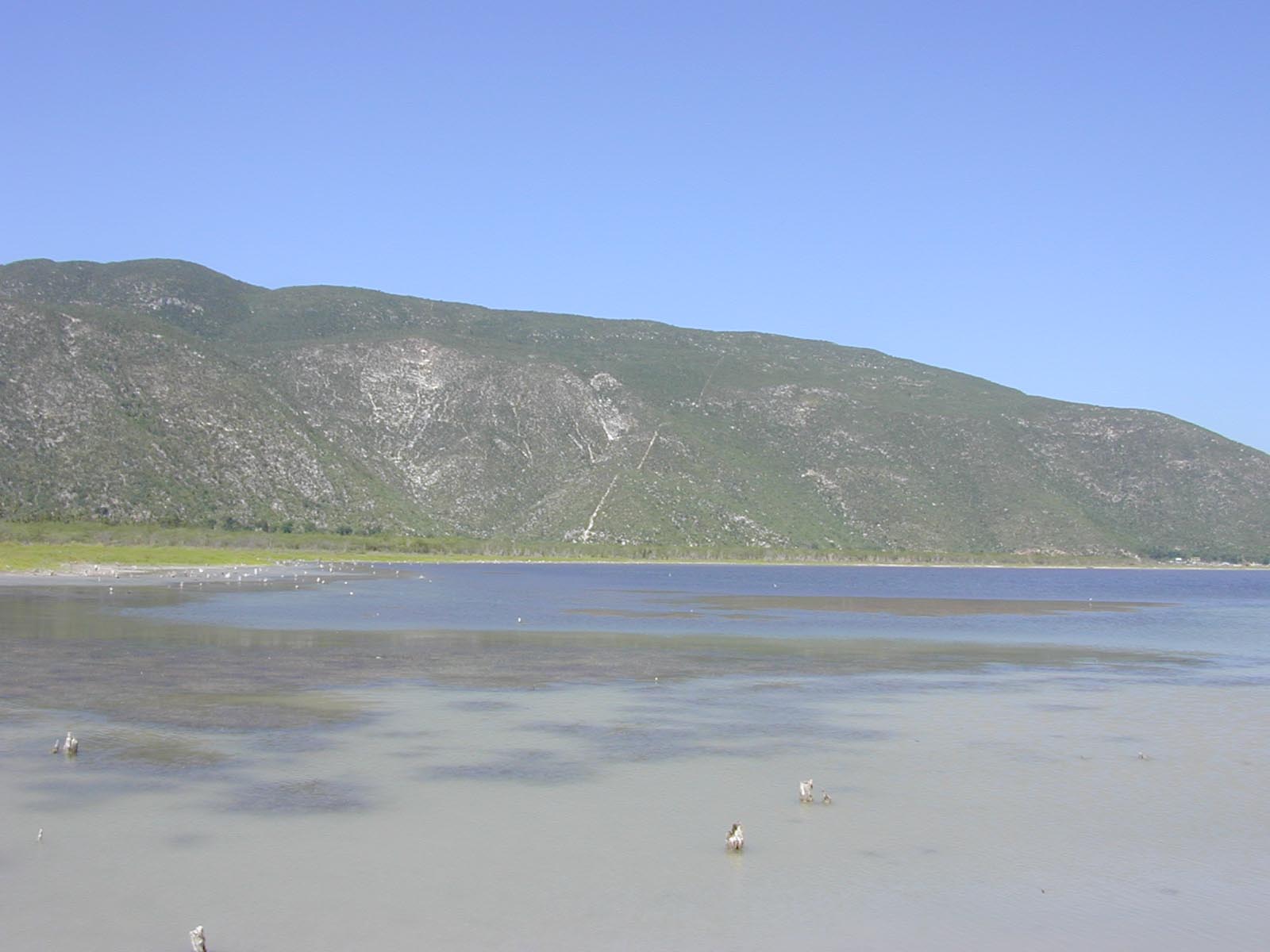BIO 607 Final: The Ecology of Adaptive Radiation
Introduction: You're visiting the island of Hispaniola, and are quite taken by what appears to be an incipient species flock of pupfish, Cyprinodon sp. (Figure 1), in the hypersaline Lago Enriquillo (Figure 2).

Figure 1. Cyprinodon sp. from Lago Enriquillo, La Republica Dominicana. Photo by Linda Fuselier.


Figure 2. Left: Lago Enriquillo, affectionately called Death Valley by the Sargent Lab, is an ancient sea basin captured by the collision of two tectonic plates. It's landlocked with no outlets, 3 times as salty as the ocean (i.e. over 100 ppt), 45 meters below sea level, hotter than blazes, and chock full of crocodiles. Right: salt crystallizes on vegetation as the lake level recedes.
In spite of its austerity, the lake supports an abundance of wildlife including flamingos (Figure 3).

Figure 3. Left: A view of Lago Enriquillo from the west end. Right: a close up of the flamingos.
The lake is fed by a number of freshwater streams, which are rich with fishes (including pupfish) and baby crocodiles (Figure 4).

Figure 4. Left: One of Los Borbollones, where freshwater meets the hypersaline Lago Enriquillo. Right: Snorkelers brave the baby crocs in order to do behavioral observations on Cyprinodon, Gambusia and Limia. Hermogenes maintains lookout for adult crocs from the blind. Lago Enriquillo is in the background.
It turns out that there is also a single form of Cyprinodon in two nearby lakes: Etang Saumatre that crosses that border between Haiti and the Dominican Republic (Figure 5) and Lago Oviedo (not shown) in the Dominican Republic.


Figure 5: Left: Etang Sumatre from the east end looking southwest. Right: A seine haul of fishes including Cyprinodon, Limia and Gambusia.
Finally, Cyprinodon also exists as a marine form that typically lives in salt marshes and estuaries, and this form has a wide geographic distribution in the Gulf of Mexico and Caribbean Sea.
Now that you've completed your ecotour, and are totally stoked to embark on this project, here are your questions.
Questions:
1. Phylogeography: Lago Enriquillo has 2 forms of Cyprinodon (benthic and limnetic, with a rare intermediate third form that may be a hybrid), Lago Oviedo has one form, Etang Saumatre has one form, and the coastal marshes and estuaries of the island of Hispaniola all share one form. Etang Saumatre is about 50 meters higher elevation than Lago Enriquillo, and about 2 kilometers away; whereas Lago Oviedo is on the other side of a small range of mountains from Lago Enriquillo. You decide to construct a molecular phylogeny for these forms, which results in the following tree.
Figure 6. A molecular phylogeny for the group. Intermediates in Enriquillo (not shown) cluster both with Enriquillo 1 and Enriquillo 2.
How would you explain the geographic pattern of the landlocked Cyprinodon species today?
How might you explain the phylogenetic relationship between the two species of Cyprinodon in Lago Enriquillo?
2. Resource Distribution, Diet and Trophic Phenotypes: The relative gill raker counts for the species in Figure 6 are Marine (high), Enriquillo 1 (low), Enriquillo 2 (high), Saumatre (medium), Oviedo (medium).
Based on these gill raker counts, how would you expect these species to differ in diet?
How might you expect the underlying resource distributions of food to vary among the 4 habitats?
What kinds of experiments would tell you if within a locality if a species gill raker number was well adapted for that resource distribution?
3. Reproductive Isolation within Lago Enriquillo: You notice in mate choice experiments for Enriquillo 1 and 2, that each form prefers to mate within its own form rather than mate between forms, yet occasionally you find hybrids, which are intermediate.
Give an adaptive hypothesis as to why these two forms may avoid hybridizing?
Design a series of experiments to test your hypothesis that involve both parental forms and the hybrids.
What role, if any, does selection play in your hypothesis, and how would you measure it?
Congratulations: Have a cold one!

Cheers
